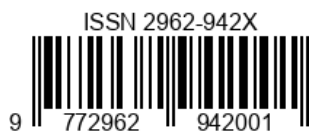Pemanfaatan Ubi Singkong untuk Membuat Jenis Kue Sebagai Penunjang Ekonomi di Masyarakat Desa Batuhoring,Kec.Batuhoring
DOI:
https://doi.org/10.55606/jpkm.v2i4.266Keywords:
Innovation, Strategy, Hard work, BlessingsAbstract
The utilization of cassava in cake production has become a significant innovation in addressing economic challenges in Batuhoring Village, Batang Toru Subdistrict. Cassava, as an abundant crop in the area, offers significant economic potential. This research explores the potential of cassava in cake production, identifies challenges in management, and formulates promotional and marketing strategies for cassava-based cake products. The results indicate that cassava has a stable raw material availability, high nutritional value, and a variety of processed cake products. Challenges involve the complexity of management and the need for strong marketing. Marketing strategies involve social media and exhibitions, emphasizing competitive pricing and understanding consumer targets. The utilization of cassava in cake production is expected to increase community economic income, support the agricultural sector, and create blessings through biblical values of hard work, sharing, and wise natural resource management.
References
Muntoha, Jamroni, dan Riska Utami Ummayah. "Pelatihan Pemanfaatan dan Pengolahan Singkong Menjadi Makanan Ringan Tela Rasa." Jurnal Inovasi dan Kewirausahaan, vol. 4, no. 3, September 2015, halaman 189
Pramudia, A., & Rustiati, E. L. (2019). "Marketing Strategy for Business Development of Cassava Based Traditional Food in Indonesia." Journal of International Social Research, 12(63), 1183-1194.
Downloads
Published
How to Cite
Issue
Section
License
Copyright (c) 2023 Remita Nian Permata Zendrato, Ibelala Gea

This work is licensed under a Creative Commons Attribution-ShareAlike 4.0 International License.







